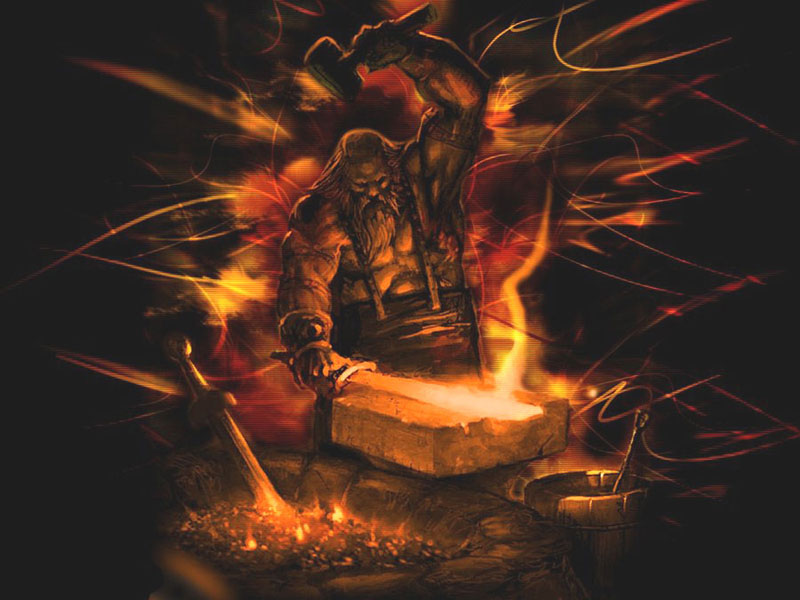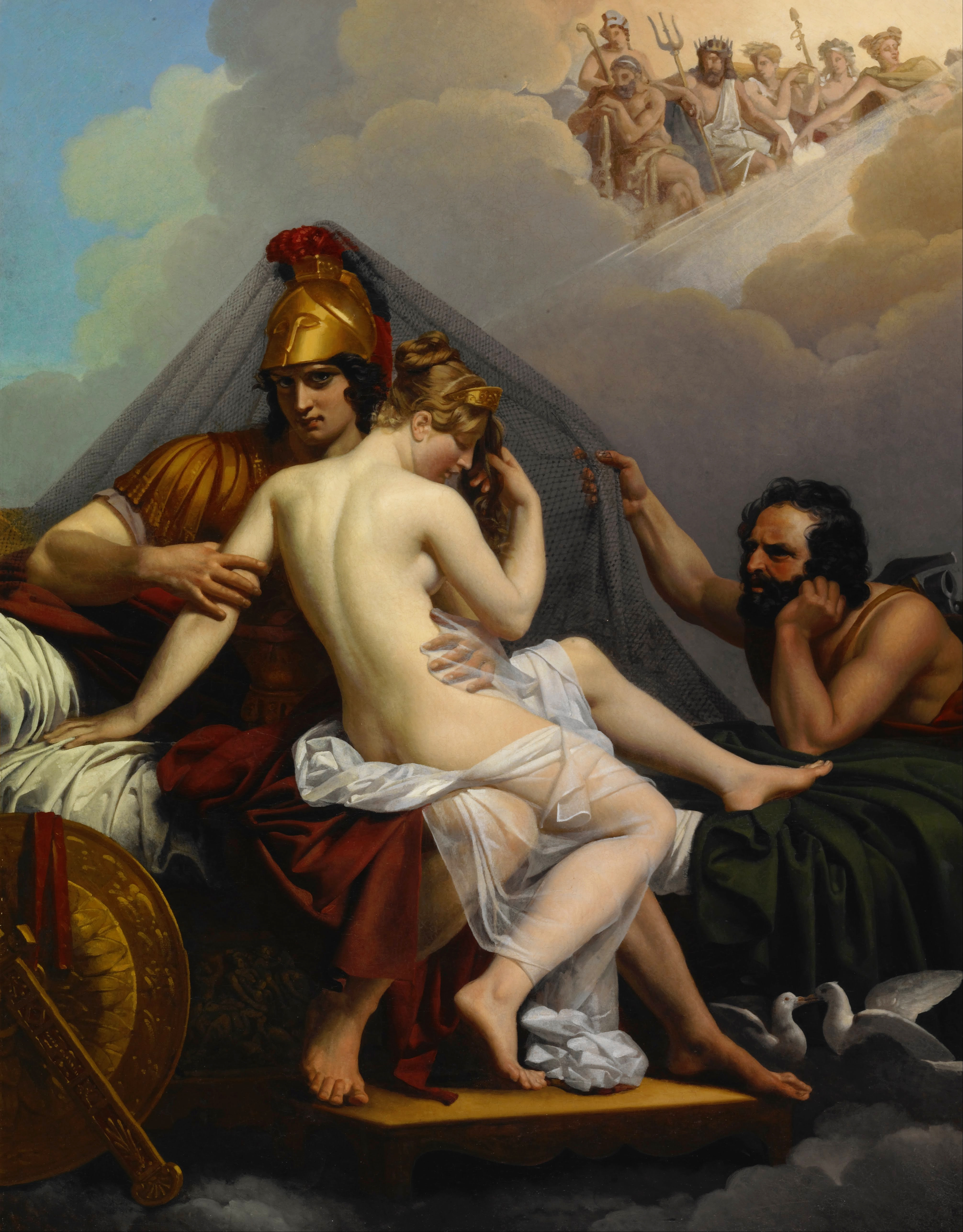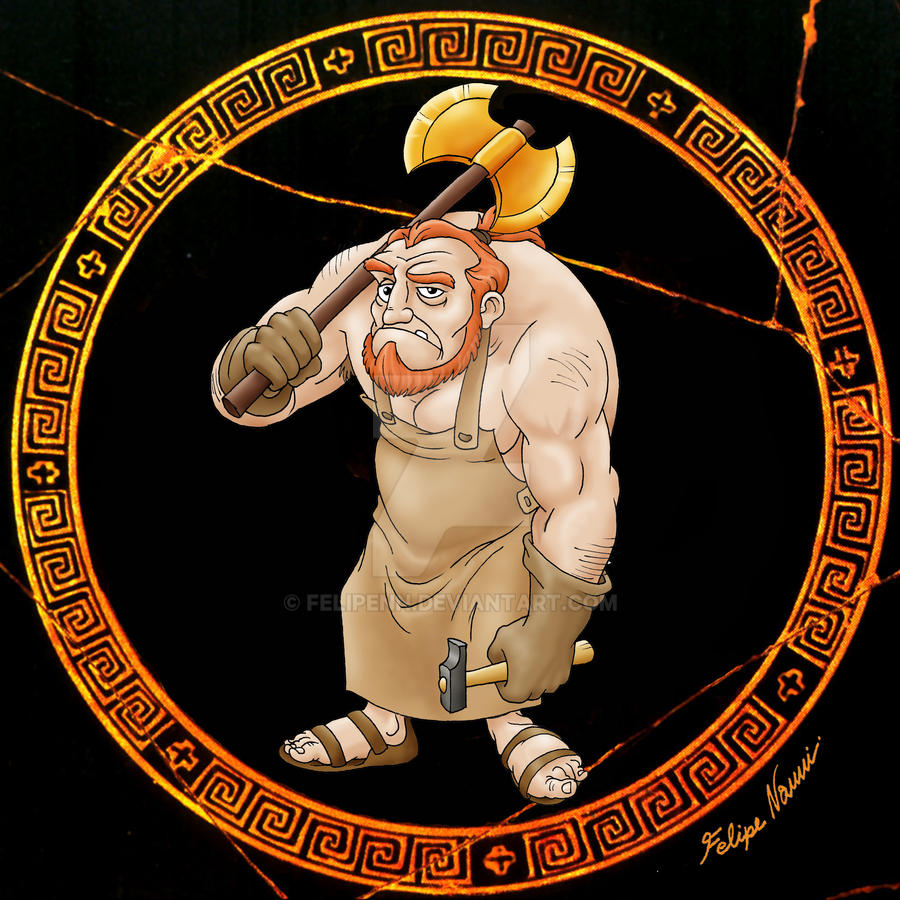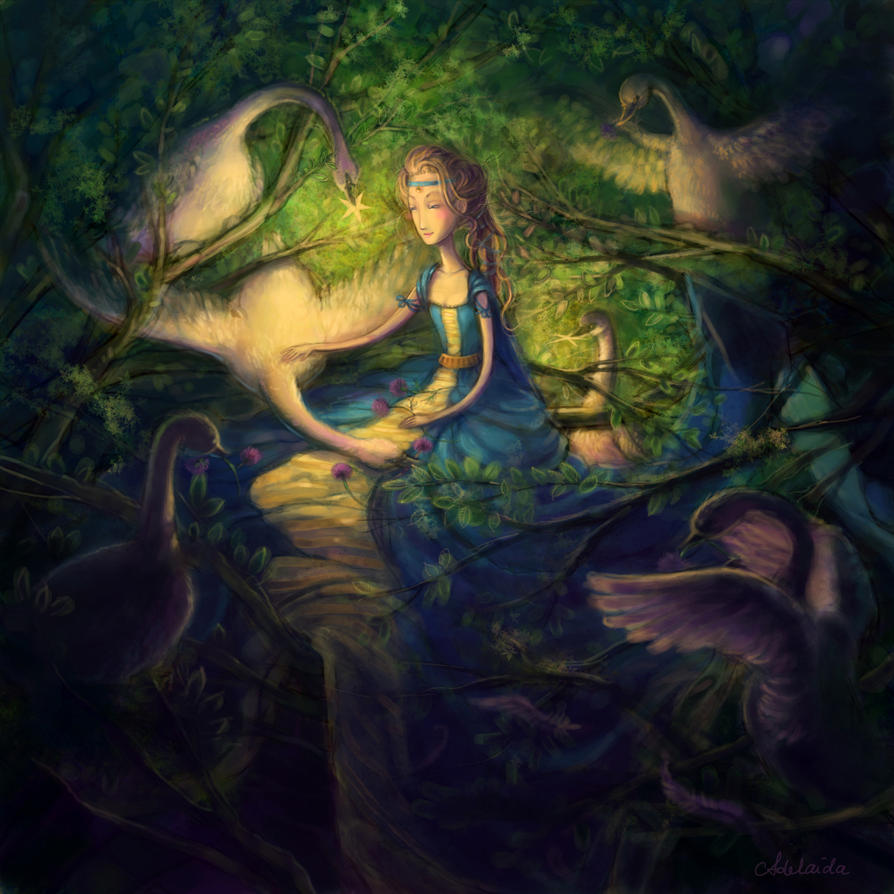Hello all!
Today I wanted to take a look at a fairy tale I really enjoy. There's several different versions of it (the one by the Grimms is, of course, significantly more violent), but the one I know best comes from Andrew Lang's
The Yellow Fairy Book. The story itself is called The Six Swans. Shall we begin?
Once upon a time there was a king who was out hunting with his court. The king got himself quite lost in the woods, and found himself hungry and thirsty, with no idea where he was or how to get back. He wandered for a time before he met an old woman - a witch.
The witch told the king that without her help, he would never find his way out of the woods. He would die of starvation, all alone. Left with no choice, the king begged the witch for help. She led him to her home, where her daughter, a beautiful maiden, sat waiting. (The book actually says "She received the King as if she were expecting him" - I've always wondered if the witch or her daughter cast some spell to get the king lost.)
A deal was offered by the witch. If the king married her daughter, she would show him the way out of the forest. On the surface, the deal was not a bad one; the witch's daughter was quite beautiful and well behaved. Yet a sense of dread filled the king every time he looked at her. Left with no choice, the king reluctantly accepted the witch's offer. He and the witch's daughter left the woods, and were soon married at his castle.
This was not the king's marriage. He was a widower, and his previous wife had given him seven children: six boys and one girl. The king's sense of unease about his new spouse lingered, and he feared for the safety of his children. Without telling her of their existence, he whisked the seven children away to a small castle in the woods, where they could live in safety.
But the king was a doting father, and he did not like to be separated from his children. Because of this, he visited them frequently, disappearing into the woods for hours at a time. The queen took note of this, and did not like his absences. Since the king refused to tell her where he went, she bribed some of his servants, who admitted to the existence of the children. (Since girls were considered inconsequential at the time, only the boys were mentioned. As such, the queen thought that there were only six kids.)
The queen did not like that at all. Her mother had taught her some of her witchcraft, so she set out for the castle with magic in hand - six enchanted shirts she had sewn. When the children saw a rider approaching they ran to meet it, expecting their father. However, the daughter was more cautious, and stayed back to watch. She was horrified to see the queen throw the shirts over her six brothers. One by one, the boys fell to the ground...where they transformed into swans!
The queen rode back to the castle, satisfied that her job was done. As for the swans, they flew off into the night, leaving the king's daughter all alone.
When the king came to visit the next day, he was horrified to find his sons missing. The princess explained everything that had happened to him, but she did not know that the attacker was the queen. Not wanting to lose his only remaining child, the king begged his daughter to return with him to the castle. However, she was afraid of the place, and instead ran away.
After she grew tired of running, the princess found shelter in a tiny cottage. There were six beds within the home, and she fell asleep underneath one of them. She awoke to the sound of wings. Six swans were flying in through the window. One by one they landed - and then they transformed into her brothers.
The boys were delighted to see their sister, and much hugging ensued. However, they warned her that she could not stay in the cottage, as its owners were rough brigands. They sadly told her that they would be unable to protect her, for the curse only allowed them to transform back into humans for fifteen minutes each evening.
The princess wanted nothing more than to find a way to break the curse on her brothers. They told her that such a thing was impossible, and that the effort required would be too great. Undaunted, she demanded to know what she needed to do.
In order to break the curse, the brothers explained, the princess would need to spend six years in complete silence. She could not speak a word, or even utter a laugh. In addition, she would need to sew six shirts out of starflowers. (In the Brothers Grimm version of the story, the shirts must be sewn out of nettles - a plant which would be significantly more painful to work with.) Despite their warnings about its difficulty, the princess vowed to do this in order to save her brothers.
With their fifteen minutes up, the brothers transformed back into swans and flew away.
With her brothers gone, the princess found a tree and climbed it to sleep. As soon as she awoke the next morning, she gathered as many starflowers as she could find. The princess began to sew.
Some time passed, and there came a day when huntsmen stumbled upon the tree the princess was sewing in. They hailed her, but she did not answer. Question after question they asked her, but the girl continued to sew in silence. When they continued to bother her, she threw down her jewelry in the hopes of quieting them; when that did not work, she began to throw down her clothing, one piece at a time.
The huntsmen were soon joined by their king, who ruled over a nearby land. He was struck with curiosity about the girl, who still refused to speak. The tree was climbed, and the princess carried down to be presented to the king. He flung his cloak around her and put her on his horse. They rode back to his castle together.
Even though she was voiceless, it didn't take long for the king to fall in love with the beautiful princess. Soon they were married, and she became his queen.
But not everyone in the kingdom was happy about this. The king's mother still lived in the castle, and she was an evil, conniving woman. She disliked the new queen, and was distrustful of her silence. She began to spread nasty rumors about the queen.
Time passed, and the queen kept true to her word - she never spoke, or laughed, and she sewed every day on the shirts. Eventually she became pregnant, and bore a child to the king. However, as soon as the child was born, the king's mother whisked it away. She spread a rumor that the queen had killed the child. The king refused to believe it, but the queen remained silent on the matter, simply taking up her sewing once more.
Again the queen became pregnant, and once more the king's mother stole away the child, claiming that the queen had killed it. The king still refused to believe that his gentle wife could do such a thing, but she was unable to speak up in her own defense. When the third child of the king and queen likewise disappeared, the king was left with no choice but to turn his wife over to the castle guards. She was sentenced to be burned at the stake the next day.
All the while, the queen continued to sew. When dawn came and she was lead away to the stake to face her punishment, she took the shirts with her. They were all finished, save for the left sleeve on the sixth shirt.
It so happened that the day she was to be burned alive was also the last day of the six years of her silence. As the queen was led to the stake, she looked up and saw six swans flying towards her. She smiled then.
The swans swooped in, and the queen flung a shirt onto each of them. One by one, the swans transformed back into her brothers. (One of them was left with a wing instead of a left arm, because he wore the shirt that she had been unable to complete.)
Her trial completed, the queen stepped down from the stake and approached her husband, who was staring in wonder at the swans-to-men. She spoke to him for the first time, and told him that she was now free to defend herself against the allegations of his mother. The queen explained that it was the king's mother who had stolen their children. The castle was searched, the children were found, and they were brought before their father.
The king's mother was punished for her wickedness. (In some versions of the story, she is attacked by the swans before they are turned back into princes. In others, she is so overcome with rage at her plan's failure that she falls into a fit and dies.)
As for the king and queen, they lived in joy and peace with the six brothers for the rest of their days.
What did you guys think of the story? If it sounds familiar, there's a good reason why. There are an enormous number of fairy tales in which the female is unable to speak for some reason (The Little Mermaid is a great example of this). There are also many in which children are transformed into birds. Sometimes these are other fowl, such as ravens - but this particular version of the story used swans for a reason. Its origins lie in the Celtic myth of The Children of Lir, which I discussed in an
earlier post.
I hope you guys enjoyed! I had a great time looking for pictures to use for this post. I'll be back next week with another story!













